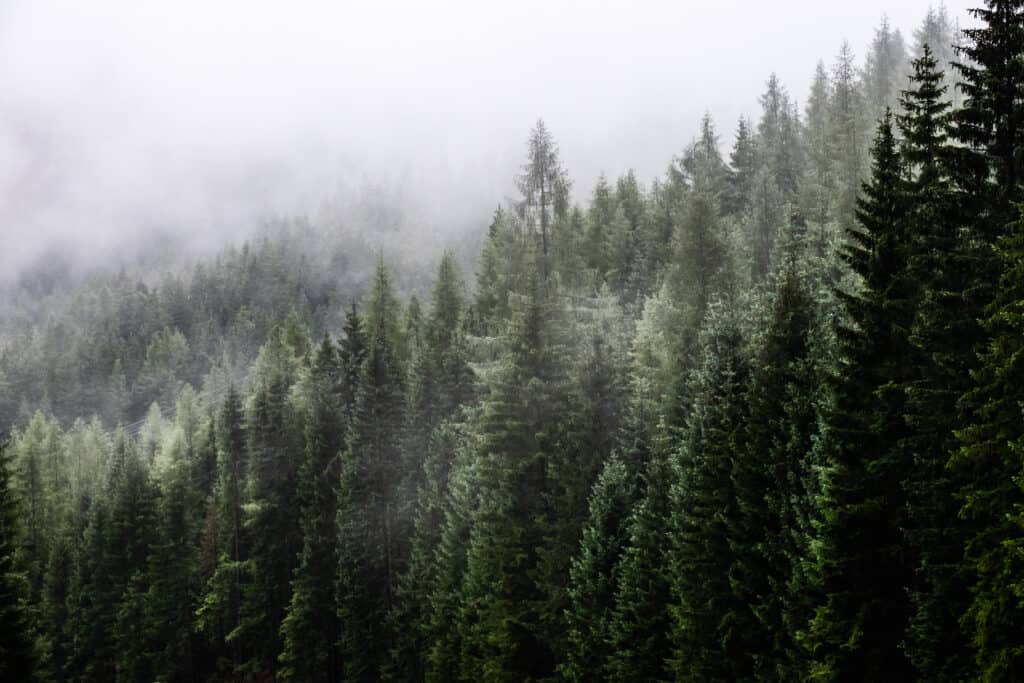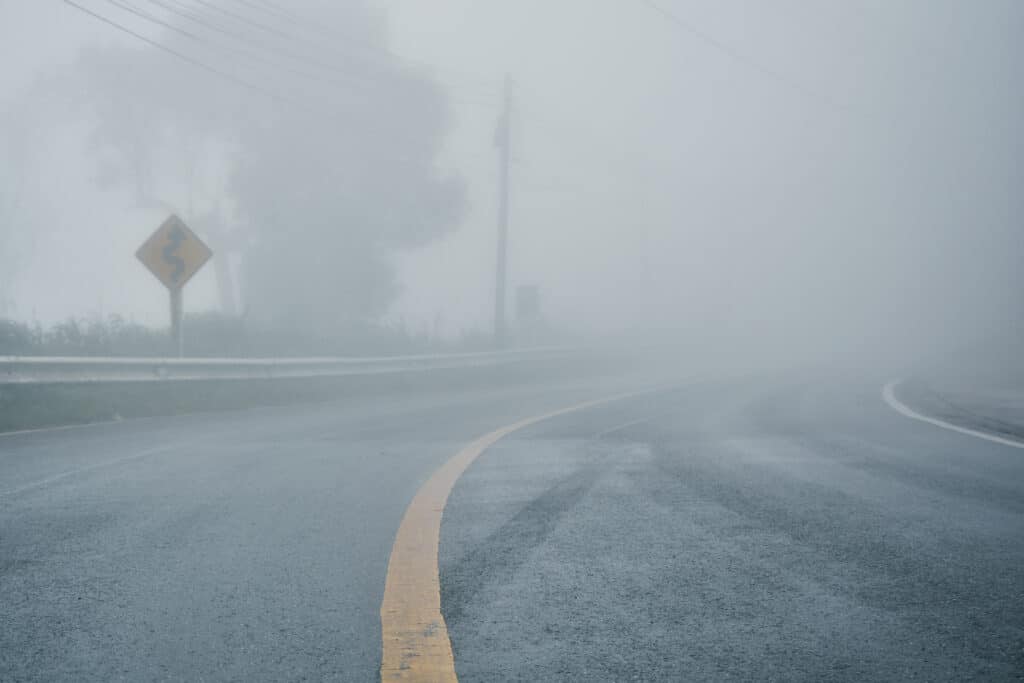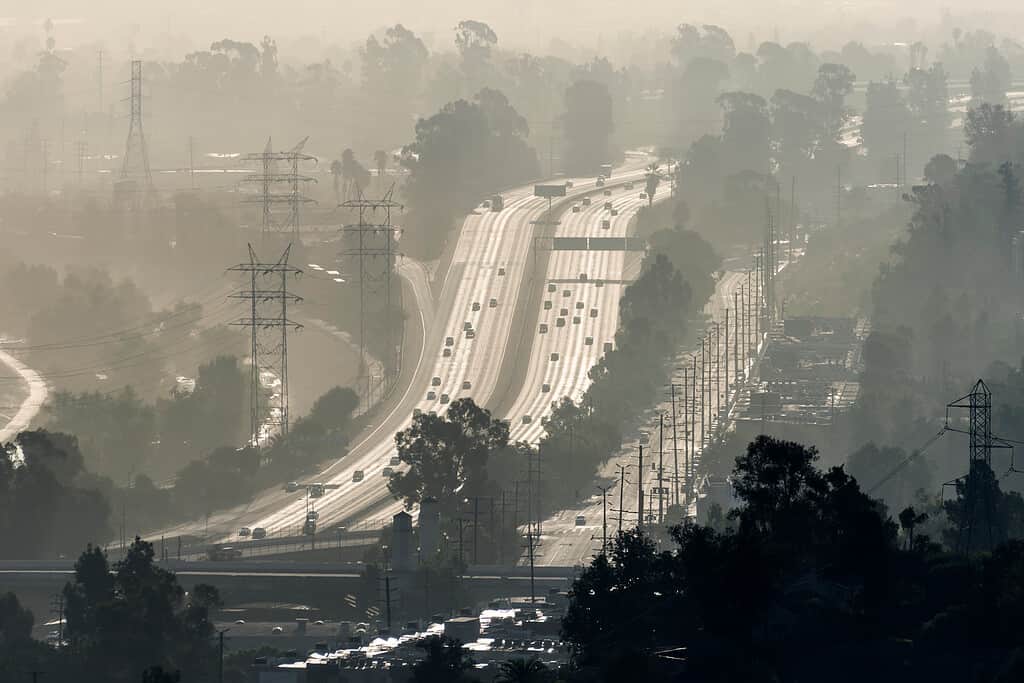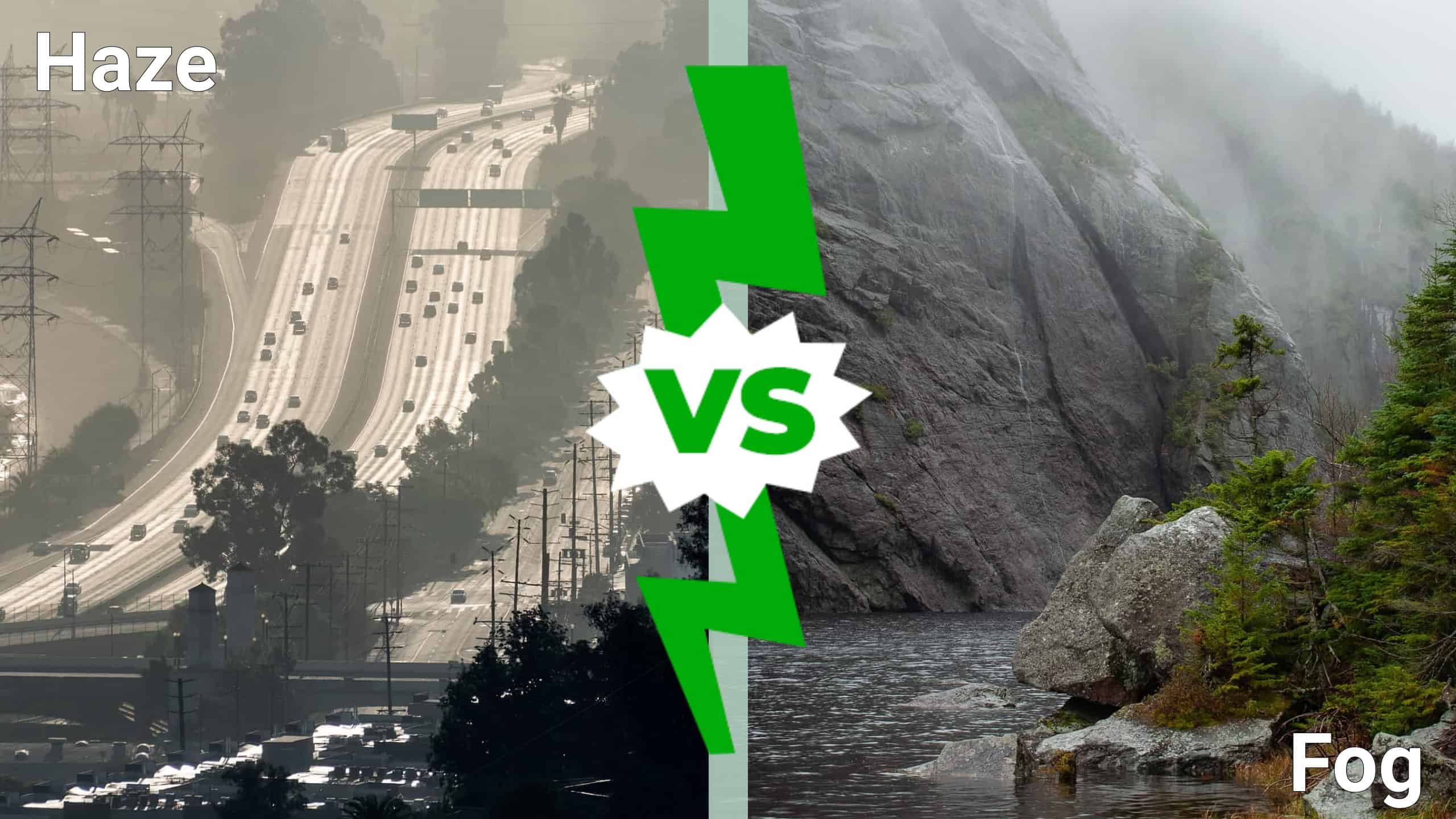Haze vs. fog; they might sound like the same thing, but they’re completely different. Fog occurs naturally in the form of thick clouds; haze is usually the result of pollutants floating around in the air. When it’s caused by city pollution, haze tends to have a gray or yellow hue. But forest fire haze is much thicker. Apart from appearances, what other factors separate haze from fog? Read on to explore the key differences between these phenomena and how to stay safe in each.
Key Differences

Fog is naturally occurring, while most haze is the result of pollutants.
©A. Blanke/Shutterstock.com
Here are the key differences between haze and fog:
- Formation
- Appearance
- Environmental Effects
Haze is caused by dust, smoke, and other dry particles. Sulfuric acid from the combustion of sulfur-containing coal is a major cause of haze droplets. In other words, fog’s natural, but haze is mostly anthropogenic. Anthropogenic means it’s a result of human activities, like pollution from industrial emissions or car exhaust. Wildfires can also cause haze.
Formation
Haze is often a dry air phenomenon. But sometimes particles can create condensation, forming mist droplets known as wet haze. Wet haze, favored by warm weather, can reach thousands of square miles.
On the other hand, fog happens when water vapor in the air condenses into tiny droplets. There are different types, such as advection fog. Advection fog happens when warm, moist air passes over a cooler surface. Valley fog hovers in mountain valleys where the surrounding topography traps cold air. Freezing fog forms when fog droplets freeze upon contact with solid surfaces, often leaving a coating of rime ice.
Appearance
Haze can obscure the clarity of the sky and have a bluish or brownish tint, often covering large areas that can reach thousands of square miles. In comparison, fog is generally white and only reduces visibility to about half a mile or less.
Environmental Effects
Haze is a major environmental concern. It’s associated with the greenhouse effect caused by carbon dioxide, methane, nitrous oxide, and halocarbons, which contribute to global climate change. Not only that, but it can also bring about negative environmental impacts like acid rain and reduced visibility.
Driving in Fog

When driving in the fog, you must prioritize safety above all else and eliminate distractions.
©iStock.com/Yutthana.Rae
Driving in fog can be an exhausting experience, and it’s one that requires your complete, undivided attention. Drivers have to prioritize safety above all else. To start, always drive at a reasonable pace, slowing down when necessary. Keep your vehicle visible by utilizing your low-beam headlights, which also activate your taillights. If possible, make use of fog lights to enhance visibility, but avoid using high beams. High beams can create glare making it difficult to perceive the foggy road ahead.
Another safety tip is to keep plenty of space between your vehicle and the one in front of you. You never know when the car in front might make an unexpected stop. If you need to stop, do so slowly and carefully. Pull over to the side of the road as far as possible. Keep your hazard lights on and engage the emergency brake.
Stay Safe in Haze

One of the ways to stay safe around haze is by limiting time spent outdoors.
©trekandshoot/Shutterstock.com
How can you stay safe in a haze? Limiting exposure to toxic particles is a start, and this means staying indoors. When you have to go outside, consider wearing the right type of high-quality mask made to provide an effective barrier against the small particles in the smoke. N95 masks can be obtained from major pharmacies and supermarkets. This mask provides adequate protection against haze and PM2.5 particles. The downside is that wearing an N95 mask can make it hard to breathe, which can cause headaches or fatigue. However, the negative impacts are lower when the mask fits your face well.
Preserving indoor air quality is also a key part of protection against smoke hazards. Simple measures like shutting doors, windows, and fireplaces can prevent smoke from infiltrating your home. Utilizing air purifiers or HVAC systems and setting filters or air conditioners to recirculate indoor air can further purify the environment. Finally, avoid activities that increase indoor particle levels, like smoking or burning candles.
More About Fog

Fog can create white fog bows that are usually larger than traditional rainbows.
©Michael Andrew Just/Shutterstock.com
Fog can create fogbows, rainbows formed by fog droplets. Like a rainbow, fog bows form from sunlight interacting with tiny water droplets in fog or mist instead of rain. These droplets are much smaller than raindrops, making fogbows appear as colorless white rainbows. No matter their color, fogbows are usually larger than rainbows.
Microbe Highway
The Namib Desert is one of the oldest deserts in the world. It’s very dry and has thick fog. The fog is created when a cold ocean current cools the air above it, causing the water to condense and create fog along the coast. Sarah Evans, a microbiologist at Michigan State University, became interested in whether the fog could carry microbes from the ocean to the desert. Research has confirmed that fog indeed transports oceanic microbes to the land. That means fog could introduce new species to terrestrial ecosystems.
Water Source
Imagine relying on fog to drink water. Some people do it every day. In arid regions, fog can serve as a life-saving source of water. Fog catchers, screens designed to collect water from fog, are popular in Bellavista, Peru, providing a crucial water supply in these areas.
Thank you for reading! Have some feedback for us? Contact the AZ Animals editorial team.








